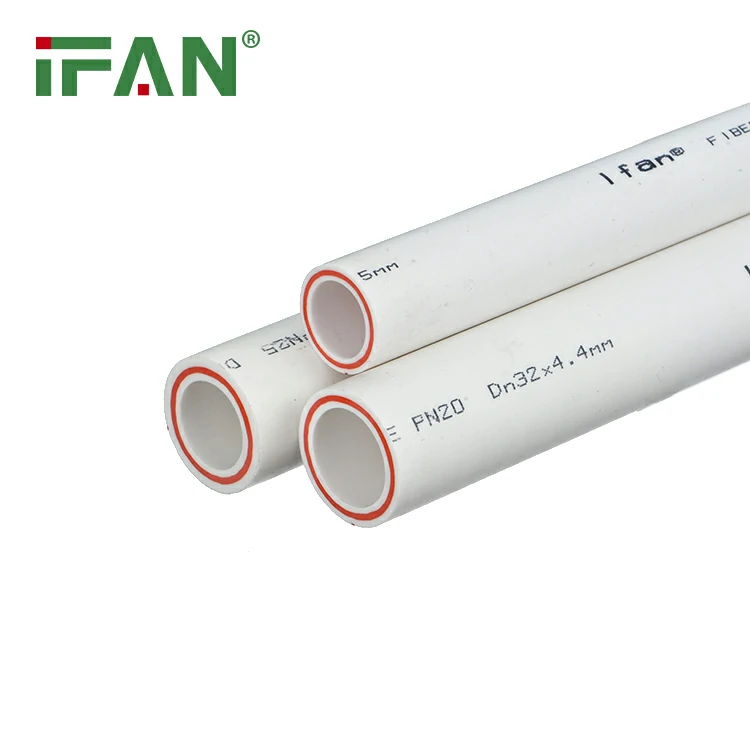Introduction to Glass Fiber PPR Pipe
Glass Fiber PPR Pipe is widely used in hot and cold water systems.
It combines polypropylene (PPR) with glass fiber for improved strength and temperature resistance.
This pipe type reduces thermal expansion compared to standard PPR pipe.
Its durability and performance make it a popular choice in residential and industrial projects.
However, not all products are created equal.
Knowing how to assess the quality of Glass Fiber PPR Pipe is essential before installation.
Several key indicators can help you make an informed choice.
This guide provides eight ways to identify high-quality pipe materials for your needs.
Examine Pipe Wall Thickness Consistency
Uniform wall thickness ensures strength and pressure resistance over time.
Use a digital caliper to measure the pipe wall at multiple points.
A high-quality Glass Fiber PPR Pipe should have minimal deviation across its surface.
Uneven thickness may indicate poor extrusion during manufacturing.
It could lead to localized stress and early failure.
Inconsistent walls may also disrupt water flow or reduce installation accuracy.
Standards such as ISO 15874 specify wall tolerance for quality assurance.
Reliable brands will label these measurements clearly on the product.
Check for Layer Bonding and Delamination
Glass Fiber PPR Pipe has three layers: outer PPR, middle glass fiber, and inner PPR.
Quality pipes should show seamless bonding between these layers.
Use a sharp blade to slice the pipe cross-section.
Check if the layers separate or peel when bent or pressed.
Poor adhesion between layers indicates weak lamination.
This can result in pressure leakage or structural failure over time.
Well-made pipes will appear as a solid unit with no visible separation.
Ask suppliers for test samples to check before full-scale purchase.
Test Resistance to High Temperature and Pressure
A key advantage of Glass Fiber PPR Pipe is its high thermal and pressure stability.
To verify this, request lab reports on hydrostatic pressure tests.
These tests expose pipes to high pressure at 95°C for extended periods.
A quality pipe should maintain integrity without cracks or deformation.
Manufacturers often label pipes with pressure ratings like PN20 or PN25.
Ensure the pipe meets your system’s operating conditions.
Fake or substandard products may fail even below rated conditions.
Independent third-party certification ensures trustworthy test data.
Evaluate Raw Material Purity
The base quality of Glass Fiber PPR Pipe depends on the purity of its raw materials.
Premium pipes use 100% new PPR and high-grade glass fiber.
Recycled or mixed materials can reduce strength and hygiene safety.
A clear sign of high purity is uniform pipe color and a smooth finish.
Low-quality pipes may show specks, discoloration, or a waxy feel.
Ask manufacturers for material safety data sheets (MSDS).
Top suppliers often use branded raw materials like Borealis or Sabic.
This transparency is a sign of manufacturing integrity.

Review Certifications and Standards Compliance
Certifications indicate that a Glass Fiber PPR Pipe meets international safety and performance standards.
Look for markings such as ISO 15874, DIN 8077/8078, or WRAS certification.
These show the pipe has passed pressure, aging, and toxicity tests.
Many reputable pipes also carry DVGW or CE marks.
Uncertified products may not comply with local building regulations.
Avoid pipes lacking clear and permanent marking on the surface.
The best manufacturers engrave batch codes, pressure class, and production date.
This traceability is critical for quality control and warranty claims.
Inspect Surface and Color Uniformity
Surface quality reflects the manufacturing precision of the Glass Fiber PPR Pipe.
The outer and inner walls should be smooth and free from bubbles or dents.
Use light to check for shadows or thin spots in the wall.
Consistent color, usually grey, green, or white, indicates uniform compound blending.
Uneven tones may suggest improper mixing of PPR and glass fiber.
Hold the pipe to the light — high-quality pipes should not be translucent.
Some low-grade pipes appear brittle or give off a strong chemical smell.
These are red flags indicating inferior materials or poor storage.
Consider Brand Reputation and After-Sales Support
Choosing a trusted brand ensures consistent product quality and technical support.
Well-known manufacturers invest in research and testing.
They also offer detailed product data, installation guides, and warranty terms.
Customer reviews, installer feedback, and project case studies are good quality indicators.
Ask if the supplier offers training or support for installers.
Reliable companies provide long-term performance guarantees.
They also maintain consistent supply batches to prevent quality variation.
A respected brand often leads to fewer system failures and reduced maintenance costs.
Conclusion: Smart Selection Ensures Long-Term Reliability
Glass Fiber PPR Pipe is a smart choice for modern plumbing and heating systems.
However, quality varies across manufacturers and regions.
By checking layer bonding, surface finish, and certifications, you can identify reliable products.
Always ask for test data and sample pieces before large purchases.
Investing in quality pipes ensures long-term safety, performance, and lower maintenance costs.
The tips in this article will help you make informed decisions and avoid substandard materials.
When in doubt, consult with certified installers or engineers.
A small effort in selection now will save time and money later.

